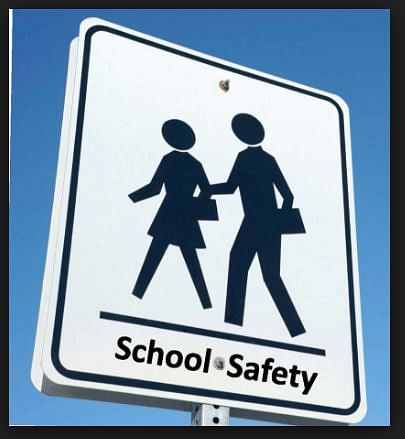
school
As per Unified District Information System for Education (UDISE), 2016-17 (Provisional), 0.67% schools are having a building in a dilapidated condition and 7.73% of classrooms in schools across the country require major repairs.
State/UT-wise percentage of schools having built-in dilapidated condition and percentage of classrooms requiring major repairs are at Annexure.
The Right of Children to Free and Compulsory Education (RTE) Act, 2009 provides norms and standards for a recognised school.
The Schedule to the RTE Act mentioning norms and standards for a school inter alia provide for an all-weather school building.
The Schedule also provides for arrangements for securing the school building by boundary wall or fencing.
The Central RTE Rules 2010 states that the School Management Committee shall prepare a School Development Plan at least three months before the end of the financial year in which it is first constituted under the Act.
The School Development Plan shall inter alia contain the physical requirement of additional infrastructure and equipment, calculated with reference to the norms and standards specified in the Schedule.
The RTE Rules also specify that the schools found to be conforming to the norms, standards and the conditions are to be granted recognition and withdrawal of recognition of the schools which do not conform to the norms, standards and conditions mentioned in the RTE Rules.
The Ministry of Human Resource Development has issued guidelines on October 9, 2014, to all State and UT Governments for ensuring safety and security of school children.
Para 4.1.2 of the guidelines inter alia states that the school building should be physically sound, all-weather structures, resistant to earthquakes, fire, safe from floods and other calamities as the children are more vulnerable to be harmed and less likely to be able to react effectively in case calamity strikes.
The guidelines also state that building should be kept free from inflammable and toxic materials.
If storage of some inflammable material (e.g. fuel for cooking mid-day meal) is inevitable, they should be stored safely.
The school should have adequate emergency exits.
There should be an adequate supply of water and sand for fire-fighting purposes.
The guidelines also specify carrying out periodical building safety audit for each and every school, reducing the structural vulnerability of existing school buildings, preparation of Disaster Preparedness and Response Plans, preparation of a standard Checklist to assess the existing structural risks in the school buildings and preparation of retrofitting guidelines to strengthen the schools found vulnerable.
Further, this Ministry has again advised to all States and UTs on September 11, 2017, to sensitise the entire administrative and monitoring machinery towards effective implementation of the guidelines on safety and security of school children; and institutionalizing and ensuring a safe, secure and vibrant environment in schools for children.
The Department of School Education and Literacy has formulated an Integrated Scheme for School Education – Samagra Shiksha, which subsumes the Centrally Sponsored Schemes of Sarva Shiksha Abhiyan (SSA), Rashtriya Madhyamik Shiksha Abhiyan (RMSA) and Teacher Education (TE).
Samagra Shiksha effective from April 1, 2018, supports States and UTs for strengthening of existing government schools, and for creation and augmentation of infrastructure facilities in schools.
The National Disaster Management Authority (NDMA) has issued school safety policy guidelines which were circulated to all States and UTs on September 1, 2017, for compliance.
The guidelines provide for conducting quarterly safety audits by the School Management Committee (SMC) in schools including fire safety and food safety.
The guidelines are in the public domain and hosted on mhrd.gov.in.
The National Commission for Protection of Child Rights (NCPCR) has also suggested authorities at different levels such as SMC, School Principal, School Management, Education Department and Boards, to conduct safety audits in schools.
NCPCR has developed a Manual on safety and security of children in a school setting.
As per CBSE Affiliation Bye-laws, before granting of Affiliation, a school is required to submit a certificate from the competent authority to the effect that the school building is safe.
This information was given by the Minister of State (HRD), Dr Satya Pal Singh today in a written reply to a Rajya Sabha question.








